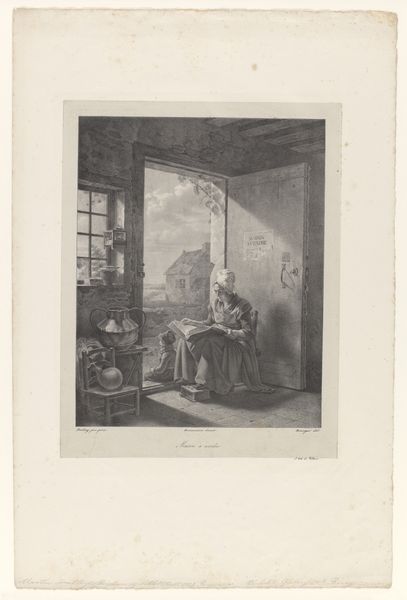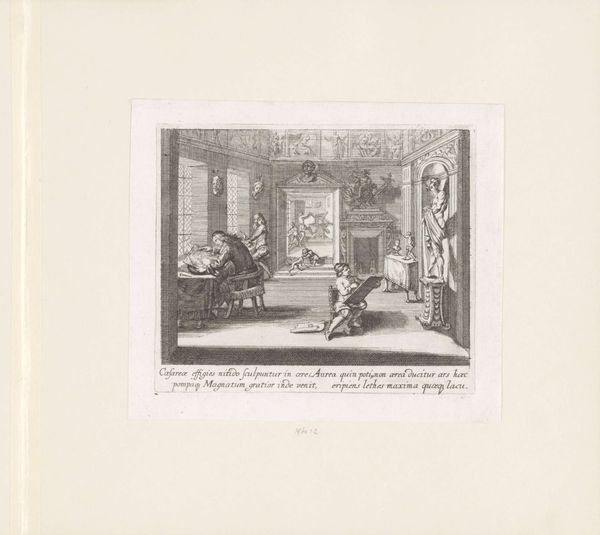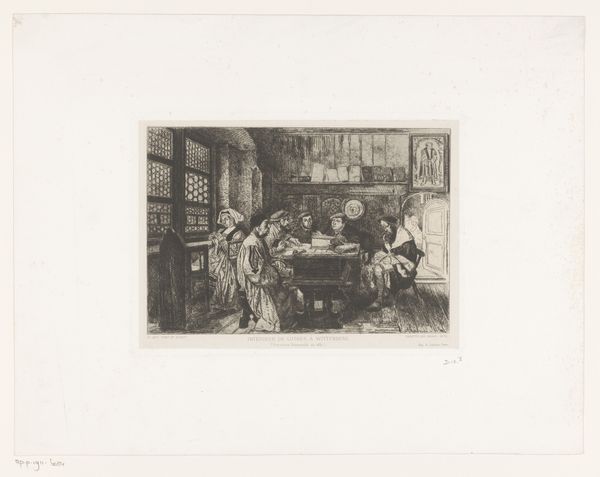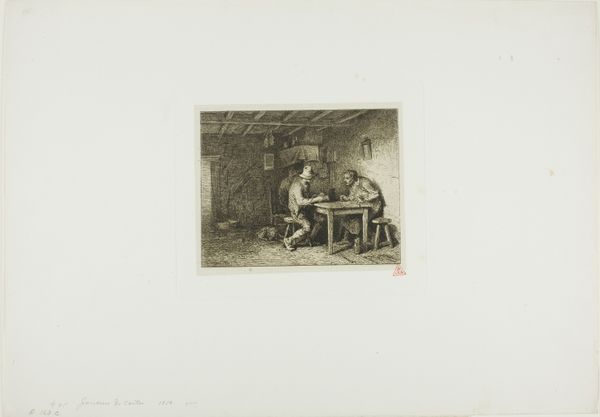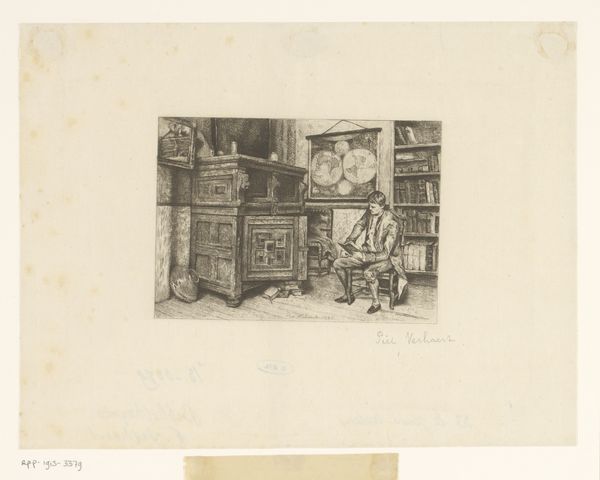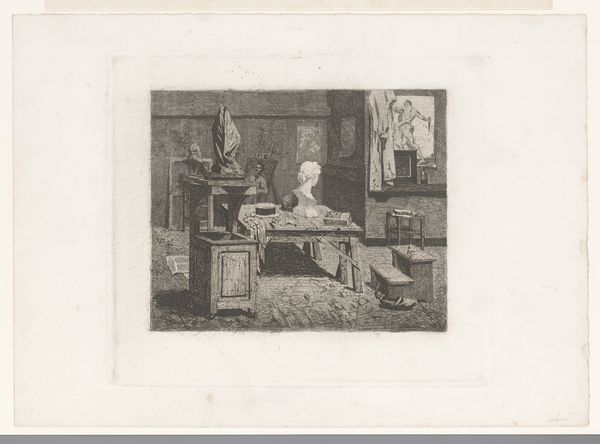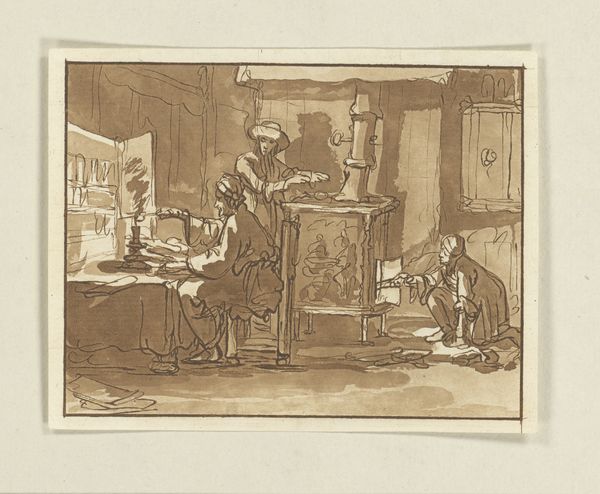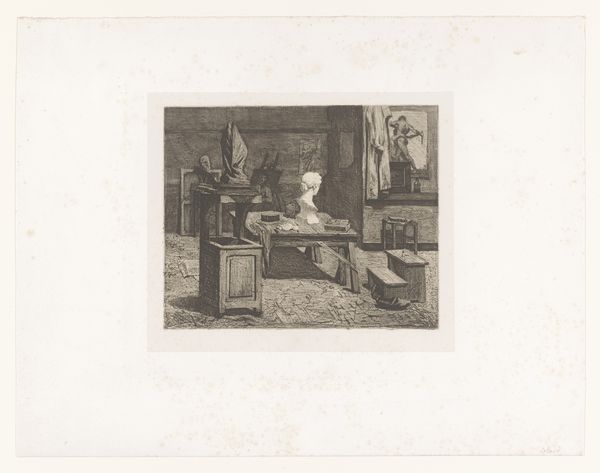
drawing, print, engraving
#
portrait
#
drawing
#
self-portrait
# print
#
pencil sketch
#
genre-painting
#
engraving
Dimensions: height 129 mm, width 153 mm
Copyright: Rijks Museum: Open Domain
Curator: Here we have "Zelfportret in atelier" by Joseph Fischer, created in 1808. It’s an engraving, offering a glimpse into the artist's world. Editor: My initial feeling is that it's quite intimate. The artist surrounded by his work creates this sense of a self-contained universe, all made visible through a print no less. Curator: It’s interesting that you pick up on that intimacy. This image really breaks down the separation between the artist, his labor, and the end product. Look how his art quite literally surrounds him. The means of production are laid bare; his art space and therefore tools visible for all to examine. We are placed almost in conversation with his methods, what stories would you suggest his artistic symbolisms narrate? Editor: Well, his atelier feels like a curated stage. His posture communicates introspection, while the landscapes displayed serve as a symbolic window to an idealized world. These visual elements – trees, mountains, and peaceful horizons – have always represented freedom, escape, or perhaps longing. Look at the painting over the shutters; the artist positions pastoral existence over urban experience; perhaps communicating his value of art. Curator: You make a compelling case for freedom of spirit. Looking at the composition, what do you make of the artist including his engravings, and in so many layers? It strikes me that he is communicating something powerful through including what are effectively duplicates. How do we perceive what has come before when something, an object, place or ideal is iterated upon. Editor: I agree with your initial proposition around the "why," I see the multiple representations not just of landscape, but also the self portrait as reinforcing his role as master. The duplication suggests a cycle of creation, destruction and rebirth through the symbolic artistic vision. As an observer it inspires an awe to his persistence. Curator: Fascinating, isn’t it, how the materiality of the print and his physical place combine to represent both his selfhood and art practice? And the fact he captures all of this, to literally print himself! It raises complex questions about how artists create and how images themselves gain new meaning and symbolic weight. Editor: It truly does offer a very rich symbolic landscape for the careful viewer. I feel this close analysis reminds me just how rich engravings of ateliers of artists have proven to be!
Comments
No comments
Be the first to comment and join the conversation on the ultimate creative platform.

